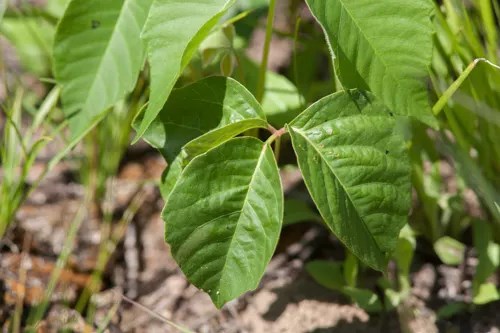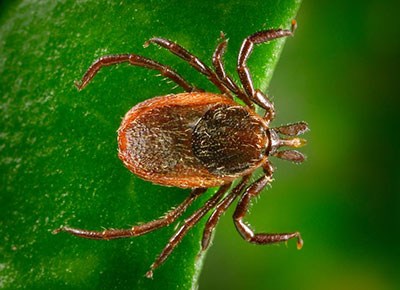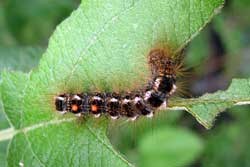
NPS/Gordon Dietzman Poison IvyPoison ivy loves the sandy soil of area beaches and is found alongside seashore trails, so there is a lot of it to avoid. (It also helps anchor the sand in place, so the plant has quite a positive role on the shore.) Poison ivy generally has groupings of three shiny leaves. They may change color depending on the season. If you know what to look out for and avoid it, you'll be fine. If you think you have come into contact with poison ivy, wash the affected area with soapy water or use a product that can cut through the oils if used close enough to first exposure. 
CDC Photo. Ticks Cape Cod is home to ticks. By know how best to avoid them, how to detect them, and what to do if one is embedded, you can reduce your risk of disease and get proper treatment if exposed. Avoid Ticks
Check For Ticks
If There is a Tick on You

Browntail Moth CaterpillarThe browntail moth larva has prickly hairs covering its body. It has two broken white lines on each side of its brown body and two orange-red spots on the end of its back. These dots are one behind the other. The caterpillars grow to about 1½ inches and are active during May and June. The hairs on the caterpillars can float through the air on windy days. They can land on humans or things that humans later touch and cause a rash. Some people have severe allergic reactions to the caterpillar hairs. The rash often appears on skin inside the elbow, around the waist or on the neck. Some people also have breathing problems from inhaling the hairs. |
Last updated: February 1, 2023
